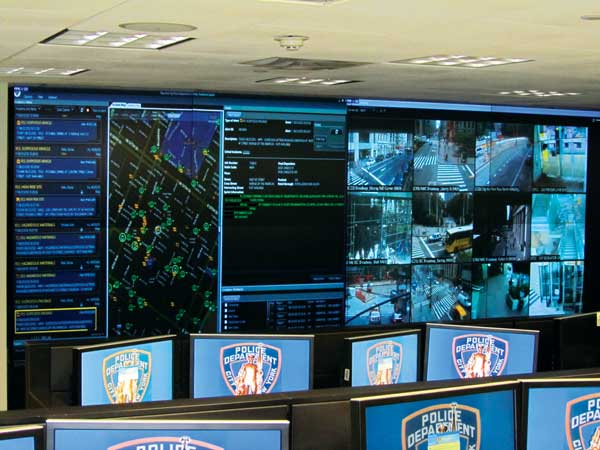
BY ALINE REYNOLDS | Brand-new software is poised to assist cops in the effort to track down terrorists targeting the World Trade Center and other Downtown sites.
The New York Police Department has joined forces with Microsoft to institute the initiative, dubbed the Domain Awareness System, with the goal of enhancing the city’s security cameras and other devices used to counter terrorist activity in Downtown and Midtown Manhattan. The system grants investigators access to information through live video feeds, suspects’ arrest records and 911 calls linked to suspects.
The majority of the city’s estimated 3,000 closed-circuit TV cameras connected to the system are situated south of Canal Street. The cameras, connected to a real time data system will be automated to locate unattended packages, according to N.Y.P.D. Deputy Commissioner Paul Browne.
“If somebody calls up and says, ‘There’s a suspicious package in front of the Stock Exchange,’ nobody has to do anything,” he explained. “It shows up in a coordination center, flashing on a map…and a person can hit a button to see any camera within 500 feet of that location.”
With the help of the advanced technology, investigators will also be able to track the location of suspicious cars and map criminal history to reveal chronological patterns of crime. The system will also be able to detect whether radioactive material is naturally occurring, a harmless isotope used for medical treatments or the sign of a dangerous weapon.
“We have thousands of detection devices, some as small as the size of a pager that police wear on their belts, to larger scans on trucks, that give details on threat levels,” said Browne.
The Domain Awareness System will be coordinated in the same undisclosed Downtown office as the Lower Manhattan Security Initiative command center, which was developed after 9/11 to heighten the city’s defense against terrorist attacks. The combined system, partly influenced by London’s anti-terorrist system, uses a combination of cameras and physical monitors to detect suspicious behavior.
“We have millions upon millions of pieces of information — everything from 911 calls to detectives’ notes about a person arrested,” Browne elaborated. “We’ve now automated that process.”
Cops, in other words, now have access to databases that give them critical clues about suspects’ appearances. For example, investigators would be able to quickly identify an arrested suspect with a certain neck tattoo, such as “Sugar.”
The city will collect 30 percent of revenues made by Microsoft on future sales of the software and will direct the money toward other new crime-prevention and counter-terrorism programs, according to Mayor Mike Bloomberg’s office.
“[The Domain Awareness System] will help the N.Y.P.D. do more to prevent crimes from occurring and help them respond to crimes even more effectively,” said Bloomberg in a statement. “Part of the reason we have been able to continue driving down crime to record lows while devoting considerable resources to counter-terrorism is our heavy investment in technology and our willingness to develop new, cutting-edge solutions to keep New Yorkers safe.”
The Department is now devising ways to be electronically alerted about threats such as traces of anthrax, according to Browne. “Right now, it’s still a manual process,” he said. “We’re hoping there’s a way to automate that.”
































